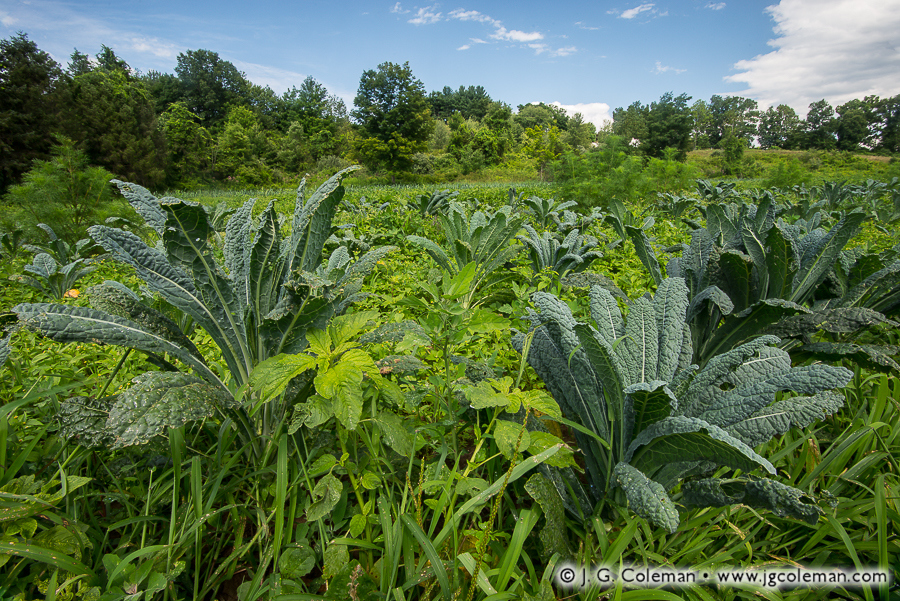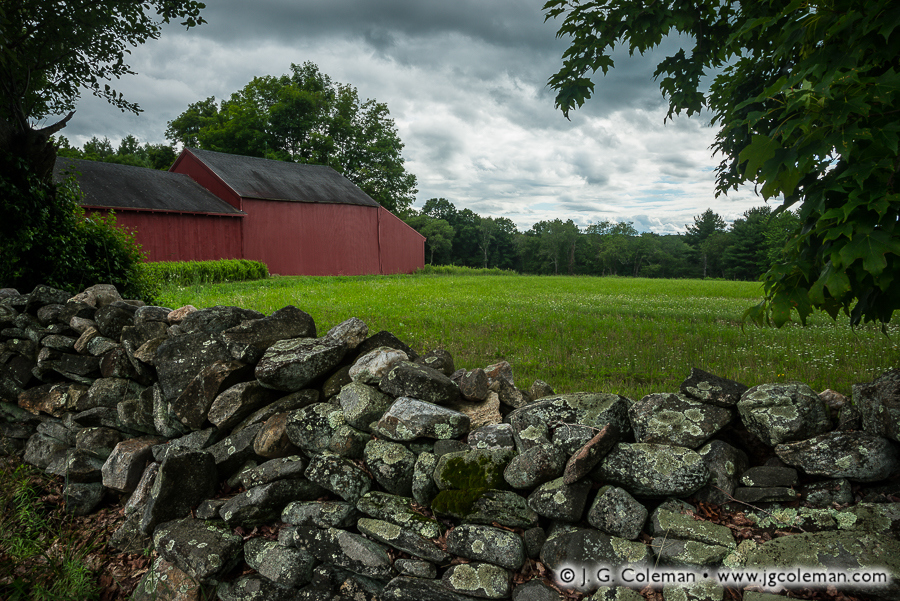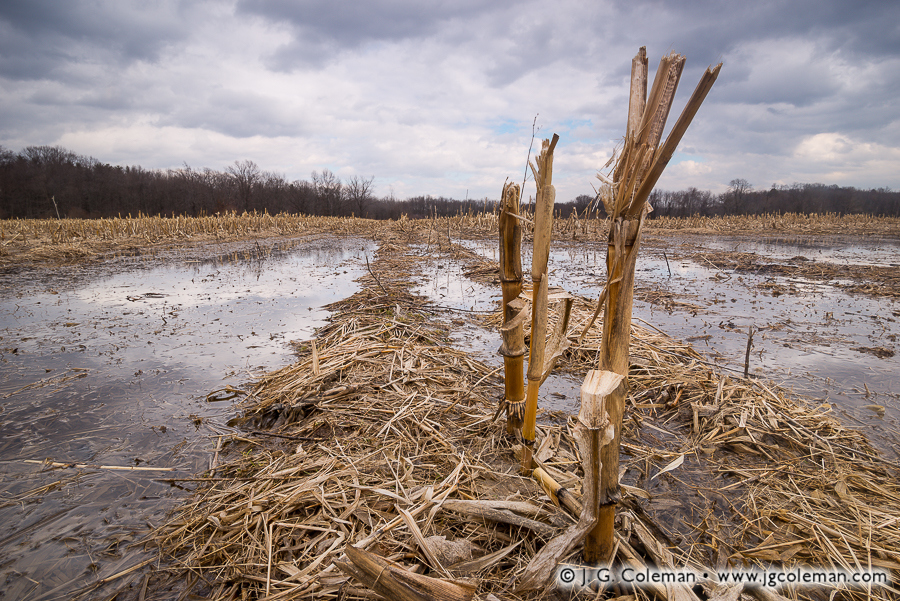
Field of kale, Granby, Connecticut
© 2015 J. G. Coleman
In the latest addition to my Yankee Farmlands project, wrinkled plumes of kale climb over encroaching weeds on a swath of sunny cropland in the hills of West Granby. Warm, summertime air drifts lazily through the field, the breeze too faint to stir the still forests along the farm edge.
Vegetables such as kale, collards, cabbage, broccoli, cauliflower, kohlrabi and brussel sprouts are popular greens that occasionally even share the same field. But would you believe that every one of those vegetables represents the same species? That’s right… even though they may look dramatically different, they all possess genes which are virtually identical to those of a weed known as “wild lettuce”.
How was such a diverse array of vegetables derived from a single species? Thousands of years ago, early farmers carefully selected generation after generation of cultivated wild lettuce to promote certain desired traits: long stems for kohlrabi, enlarged flower buds for broccoli, broad leaves for kale and so on.
Purchase a Fine Art Print or Inquire About Licensing
Click here to visit my landing page for “Yankee Farmlands № 32” to buy a beautiful fine art print or inquire about licensing this image.





